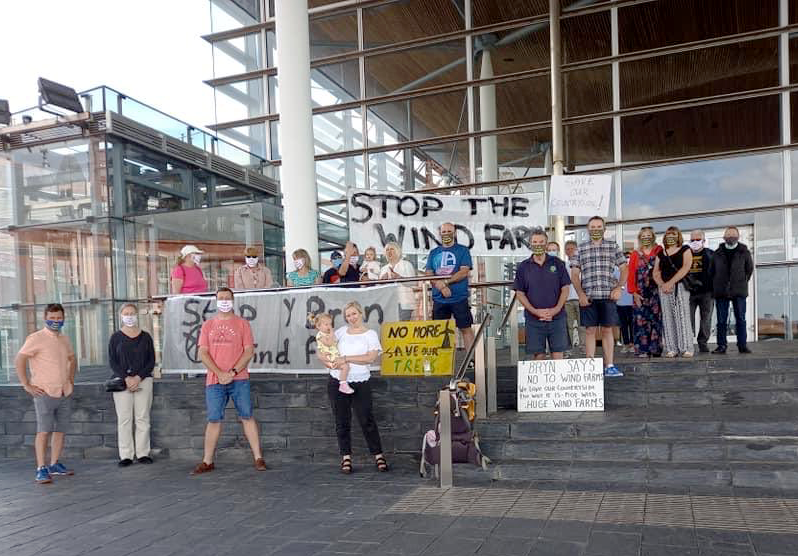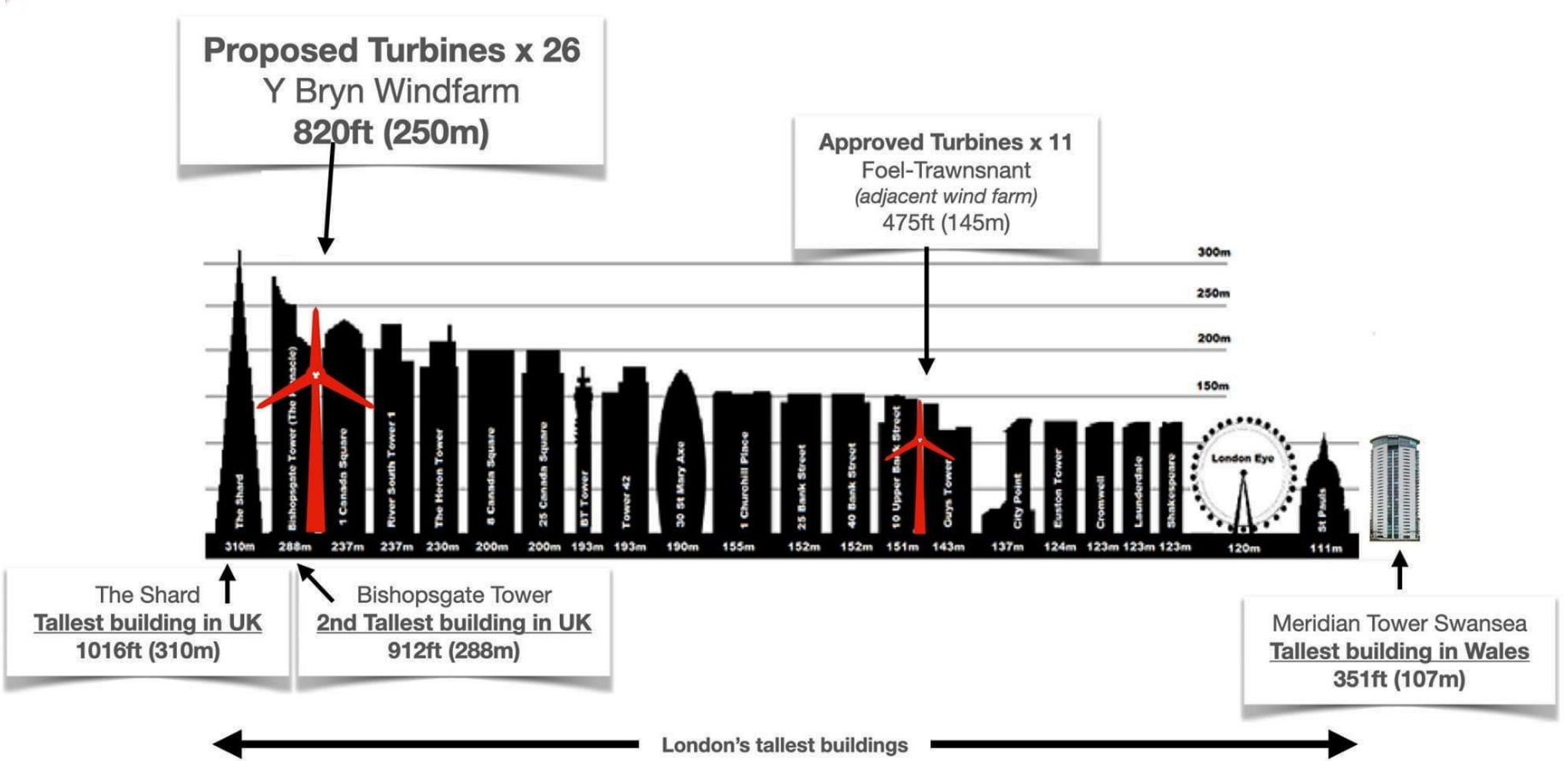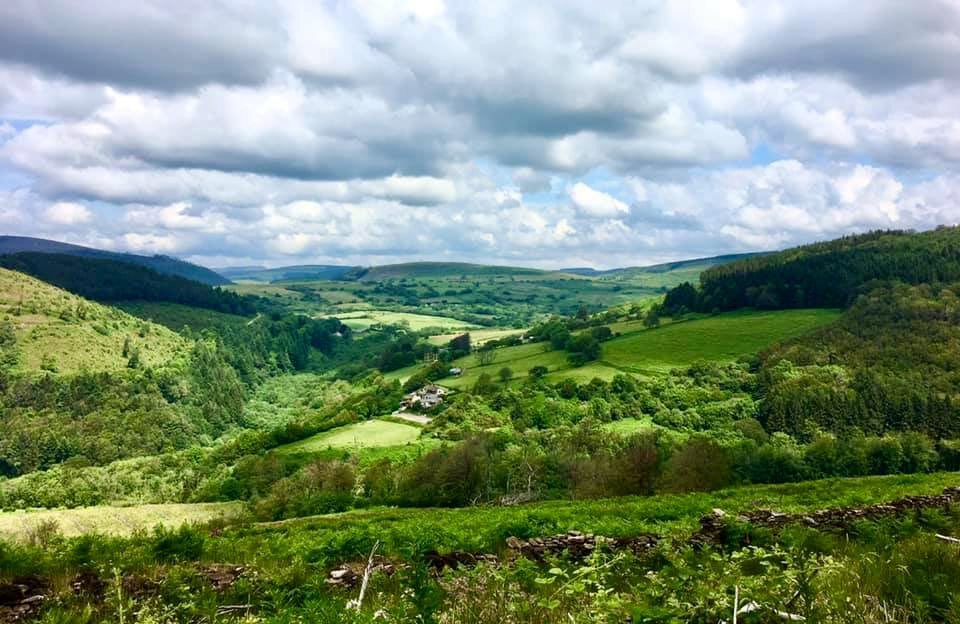![]() The title is a nautical reference to wind, and a change of direction, which I’m entitled to use cos I was in the Sea Scouts. Right! And what I’m alluding to will, I hope, become clear before the end.
The title is a nautical reference to wind, and a change of direction, which I’m entitled to use cos I was in the Sea Scouts. Right! And what I’m alluding to will, I hope, become clear before the end.
◊
TWM SIÔN CATI
We start in the wild and beautiful uplands between Lampeter and Llanwrtyd, once home to Thomas Jones, known to us all as Twm Siôn Cati, or Twm Shôn Catti.
In the centre of the map I have pinpointed Bryn Cadwgan; Twm’s cave is to the west, and to the south east we see Ystradffin, where Twm took a fancy to the widowed heiress, Joan, and eventually married her.

Last year I wrote about a plan for wind turbines at nearby Bryn Brawd, which you can see to the north west of the pin. It was in this post, just scroll down to the section ‘Local benefits (well, local to somewhere)’.
A company mentioned in that piece, Awel Newydd Cyf, recently issued 43,659,462 shares. Which suggests there may be something in the wind. (Geddit?)
But I wouldn’t get carried away by the company’s Welsh name, for it’s ultimately owned by Elm Trading Ltd, which has being issuing shares like they’re going out of fashion.
The Elm Trading website tells that a number of its assets are in Wales.
We’re switching our attention to Bryn Cadwgan because another wind farm is planned there, and it should go without saying that the plan comes from yet another gang of foreign investors.
So who is it this time?
◊
GALILEO GREEN ENERGY
This company launched in early 2020, and is headquartered in Zurich, Switzerland. Set up with . . .
. . . an initial investment of £190m from its four institutional long-term investors,
These ‘investors’ are all from Australia and New Zealand.
Since then Galileo Green Energy UK seems to have divided into a Scottish operation, now based at 7 – 9 North St. David Street in Edinburgh; and a Welsh operation at C12 Cathedral Road in Cardiff.

Galileo Green Energy Wales was set up in April 2021, and was originally known as GGE Machynlleth Ltd (until 4 June 2021). Why ‘Machynlleth’ should appear in the name is a mystery, seeing as the original address was in Bristol, and the first directors lived in Italy (2), France, and Ireland.
Was the original plan to bless the Dyfi valley with yet another wind farm?
All 10,000 shares for Galileo Green Energy Wales are held by GGE Nordics Ltd, who can now be found at the North St. David Street address. But until January this year was up on the fourth floor of 115 George Street in Edinburgh.
The majority shareholder in GGE Nordics is Empower Renewables Ltd, also of 7 – 9 North St. David Street. When we look at Empower’s UK registration we see that apart from a Dane (who lives in Killarney) all the directors are Irish, with control exercised by Diarmuid Anthony Twomey of Castleknock, Dublin.
Twomey is also a director of Galileo Green Energy Wales Ltd.
At the risk of getting distracted or bogged down . . . another company using the fourth floor at 115 George Street as an address is Vistra Ltd.

I only mention this because Vistra’s main UK office seems to be at 10 Temple Back in Bristol. Which is where Galileo Green Energy Wales started out.
Finally, we need to look at Galileo Energy UK Ltd, formed 18 February 2022, and originally known as Galileo Green Energy Management Services UK Ltd. This company is wholly owned by Galileo Green Energy Gmbh of Zurich.
I bet like me you’re excited by all the Welsh involvement in these projects!
◊
MYNYDD TY-TALWYN ENERGY PARK
“So where are we now?“, you’re wondering. Well, Mynydd Ty-talwyn, or Mynydd Ty Talwyn, is just to the north west of Bridgend. Outlined in red on the map.

Other than Bryn Cadwgan it’s the only Welsh site I’m aware of. Though the website tells us (scroll down to the ‘About Galileo’ section): ”
Mynydd Ty-talwyn Energy Park is one of a pipeline of our new renewable energy projects in development across Wales.
So where are the others?
Never mind that for now, because I want to concentrate on a worrying claim and a serious untruth, on the Mynydd Ty-talwyn website; and I also want to highlight a major drawback with Bryn Cadwgan.

Under ‘Specifications’ ‘Wind’ we read,
Approximately 64,643 tonnes of carbon dioxide emissions saved per annum.
We don’t normally see this calculation given, so why do we see it here? One possibility must be that the calculation has been made for the purposes of carbon offsetting.
Just as medieval evil-doers would pay the Church to be forgiven their sins, and carry on sinning, carbon offsetting is a twenty-first century version of the scam.
Immediately below we read, “Up to 50-year lifetime“. If that’s the projected lifespan of the Mynydd Ty-talwyn Energy Park then Galileo must plan to replace the turbines at least once. For few turbines last 20 years.
On the other hand, if Galileo is saying that the turbines they hope to erect at Mynydd Ty-talwyn will last 50 years, then that statement is an outright lie.
Another issue is that Mynydd Ty-talwyn is home to a . . .
Cluster of nationally important medieval house platforms and settlement remains.
The reference comes from a report of March 2021 to Bridgend CBC of scoping work carried out in relation to the application for nearby Y Bryn Energy Park.
And they’re shown clearly on the OS map for the area. Though just one is shown on the map supplied by Galileo (above) there are at least three around Mynydd Ty-talwyn.

We saw Irish control of Empower Renewables Ltd up at North St. David Street, Edinburgh, and Coriolis Energy, the company behind Y Bryn, is also Irish. The other company involved at Y Bryn is ESB UK, the UK face of a further Irish company.
Mynydd Ty-talwyn is not far off the beaten track, but even so, there will be environmental damage caused hauling huge turbine blades and towers to a relatively unspoilt area.
And let’s not forget the vast concrete bases for each turbine, and the access roads gouged out of the earth, the trenches for cables . . . and then there’ll be the pylons . . .
We can take it for granted that the blades and towers will not be manufactured locally, which will probably see them shipped into Swansea docks and then taken along the M4, before the final four or five miles of their journey to the site.
But the problems that’ll be encountered there are nothing compared to what will need to be overcome at Bryn Cadwgan. From Swansea docks the loads can take the M4 west, and then perhaps the A483 up past Llandovery, but then what?
Once you leave the A483 and head for Rhandirmwyn, and the closer you get to Bryn Cadwgan, the more you’ll realise that you’re really out in the sticks.

To reach the site itself, new roads will have to be laid. The environmental damage caused will be immeasurable . . . unless of course those clever people at Galileo can get their calculators out again.
◊
WHO’S WHO AT GALILEO
Let’s start by going back to the main Galileo website. In particular, to the ‘Our People‘ section where, yet again, we see a complete absence of Welsh involvement. Whereas in Scotland, those involved all seem to be Scottish.
Let’s look first at Rob Paul and Joe Winton, both described as ‘Development Manager’. These two are also directors and shareholders of One Wind Renewables Ltd of Truro, a dormant company.
We find these two, along with Simon Edward Coles, at a number of renewables companies. They’ve been knocking around the sector since they were callow youths, and both seem to have started out with Ecotricity.
Next we turn to Leslie Walker, Senior Project Manager. Very interesting, Ms Walker. Here’s her Linkedin page to give you a clue as to where we’re going. (Scroll down to her ‘Interests’.)

On that Linkedin page you’ll see that she works for Dutch company Arcadis Consulting. And has done for over 30 years.
I’d never heard of Arcadis, maybe I should have, because it gets a lot of work in Wales. Much of it from the so-called ‘Welsh Government’.
Here’s an example. A report from just last month about Arcadis working with US company Tetra Tech for the ‘Welsh Government’ on a new bridge at the Prince of Wales dock in Swansea. No mention of Swansea council involvement.
But Cardiff council is mentioned in this piece about Arcadis helping the council develop an electric vehicle strategy. (In conjunction with the local fire brigade?)
Let’s step back to 2017 and find Arcadis working for the ‘Welsh Government’ on strategic transport connections for Dinas Powys.
And talking of transport . . . From November 2020 we have this final scoping report from Arcadis on the Integrated Sustainability Appraisal of the Wales Transport Strategy.
There’s a transport strategy!
Arcadis and the ‘Welsh Government’ are ‘close’. As this piece makes clear.

I’m not for one minute suggesting that Leslie Walker is not good at what she does, but if I was in the position of Galileo, hoping to get approval for major contracts in Wales, I’d be looking for somebody who knew their way around the Bay.
And recruiting Walker might be less controversial than taking on Matt Enoch who, after 13 years as Project Manager and then Project Director with the ‘Welsh Government’, joined Arcadis in October 2019 as Project Director.

I could go higher up the food chain to people like Ingmar Wilhelm, CEO at Galileo Green Energy, but it wouldn’t tell us much more than we already know. We’re dealing with foreign individuals, foreign companies, foreign money.
Our contribution is our country – and most of us don’t even know we’re making it.
◊
FINAL THOUGHTS
Earlier I mentioned that GGE Nordics Ltd, which owns Galileo Green Energy Wales, had been based at 115 George Street, in Edinburgh’s New Town. When I wrote it, I thought to myself, “Jones, that address rings a bell“.
And sure enough, it’s an address I’ve seen in connection with Bute Energy. More specifically, with Copenhagen Infrastructure Partners (CIP), which is investing in Bute’s Welsh projects. I wrote about here.

Bute is a Scottish company that’s appeared on this blog many times. It has insane plans to turn our country into a vast open-air electricity generator for England. And like Galileo, Bute employs people familiar with the denizens of the Swamp.
The connection between Bute and Galileo seems to be by association, via CIP. Then again, the link could be Vistra, with companies using it as their address. Which might explain the original Bristol address for Galileo Green Energy Wales.
Food for thought.
We may have missed the public meetings for Mynydd Ty-talwyn, but those for Bryn Cadwgan are being held next week; Llanddewi Brefi on Wednesday, and Pumsaint on Thursday.

I suggest that people turn up to these meetings and demand answers to all sorts of questions. Here’s what I might ask . . .
- How much environmental damage will be done transporting the turbines to and and erecting them at Bryn Cadwgan?
- Where are Galileo’s other Welsh projects?
- How many local jobs will be provided at Bryn Cadwgan?
- Is Galileo claiming that wind turbines last for 50 years?
- How much of Galileo’s business model is carbon offset ‘greenwashing’?
- Is there any connection between Galileo Green Energy and Bute Energy?
And finally, always remember! wind turbines are not built to save the planet. They’re built to make a few people a lot of money, and to make our lives more difficult through an increasingly expensive and unreliable electricity supply.
♦ end ♦
© Royston Jones 2023






